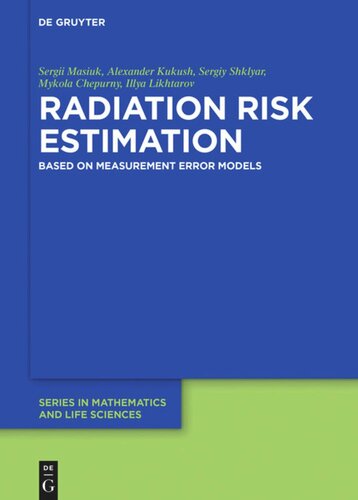

Most ebook files are in PDF format, so you can easily read them using various software such as Foxit Reader or directly on the Google Chrome browser.
Some ebook files are released by publishers in other formats such as .awz, .mobi, .epub, .fb2, etc. You may need to install specific software to read these formats on mobile/PC, such as Calibre.
Please read the tutorial at this link: https://ebookbell.com/faq
We offer FREE conversion to the popular formats you request; however, this may take some time. Therefore, right after payment, please email us, and we will try to provide the service as quickly as possible.
For some exceptional file formats or broken links (if any), please refrain from opening any disputes. Instead, email us first, and we will try to assist within a maximum of 6 hours.
EbookBell Team

5.0
100 reviewsThis monograph discusses statistics and risk estimates applied to radiation damage under the presence of measurement errors. The first part covers nonlinear measurement error models, with a particular emphasis on efficiency of regression parameter estimators. In the second part, risk estimation in models with measurement errors is considered. Efficiency of the methods presented is verified using data from radio-epidemiological studies.
Contents:
Part I - Estimation in regression models with errors in covariates
Measurement error models
Linear models with classical error
Polynomial regression with known variance of classical error
Nonlinear and generalized linear models
Part II Radiation risk estimation under uncertainty in exposure doses
Overview of risk models realized in program package EPICURE
Estimation of radiation risk under classical or Berkson multiplicative error in exposure doses
Radiation risk estimation for persons exposed by radioiodine as a result of the Chornobyl accident
Elements of estimating equations theory
Consistency of efficient methods
Efficient SIMEX method as a combination of the SIMEX method and the corrected score method
Application of regression calibration in the model with additive error in exposure doses